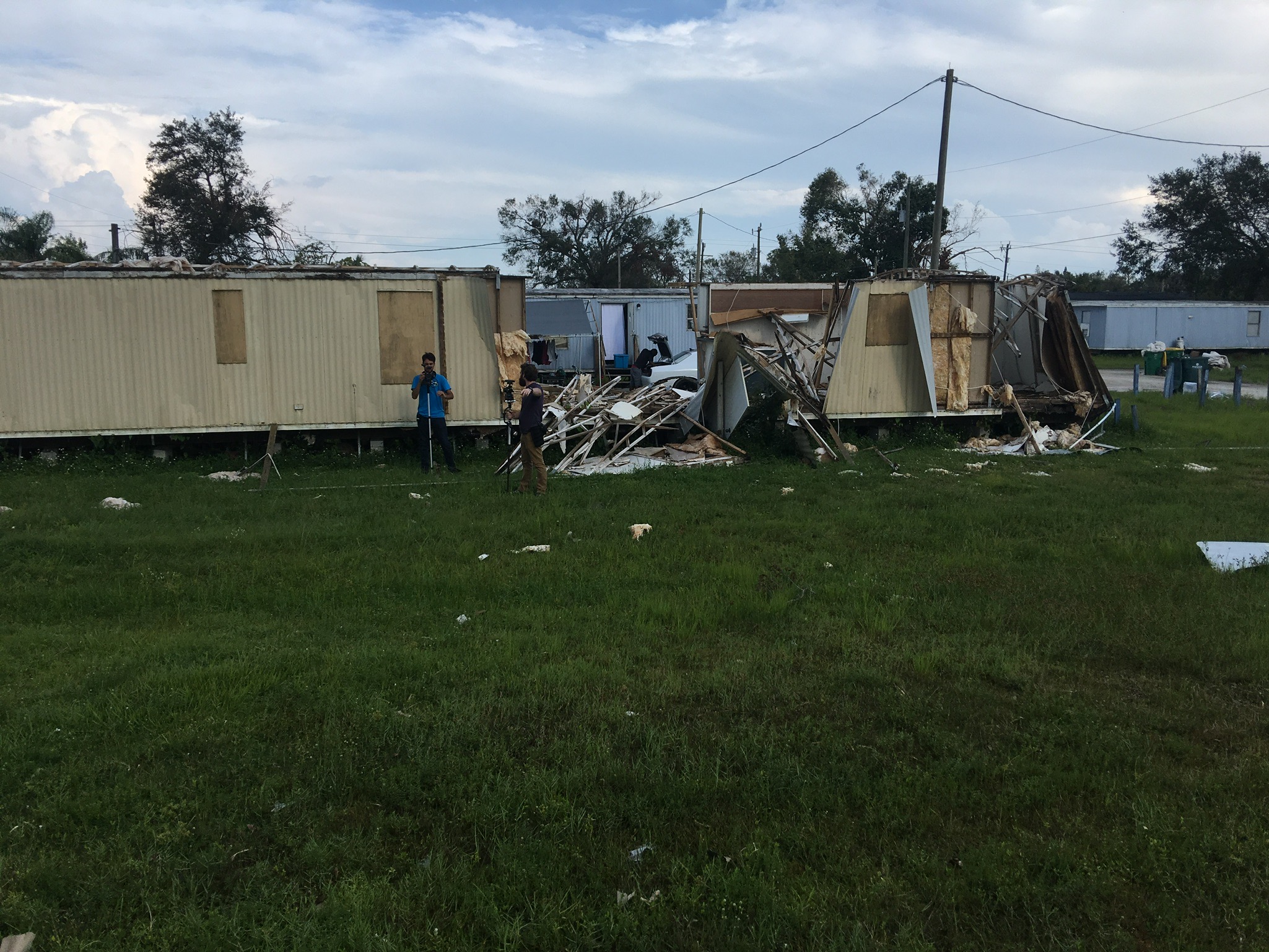
By Kami Klein
Imagine being a hard working family in a small agricultural town in Florida. You don’t have much but everyday you give it the best you can. You work hard, you love your family and you support your church. But then a storm like Hurricane Irma hits and is unlike any storm you can remember. The town you knew, the job you went to everyday, your home where your family and friends gathered and the simple vital items such as food and clean water are gone.
This is the fate of thousands of people in Immokalee, Florida, one of the hardest hit communities of Hurricane Irma. With no power, lack of good drinking water and warm meals for families, the people in this community have been devastated. At this very moment, the donations you have provided through our Disaster Relief fund are giving hope and food to hungry people who have lost literally everything.
Yesterday our Morningside team, Mondo DeLaVega, Ricky Bakker, Tammy Sue Bakker, Daina Martin and our camera crew David Zorob, Hamilton Neumann and Adam Armstrong, began handing out the food from our food buckets. The people stood in line for hours, waiting to fill bags, boxes and buckets up with rice, beans, pancake mix, vegetable stew, milk, banana and apple chips and so much more because of YOUR gifts to the relief effort. At times, the line seemed never ending, and the experience of seeing so many who were waiting so patiently for help stirred the deepest emotions in the volunteers who were there.
Tammy Sue Bakker attempted to share the emotions that the volunteers were feeling. “If you have a heart, it’s just so hard to talk about it…We’ve got to keep helping people. We have no choice!”
Mondo and Tammy Sue agreed that the entire team has been completely changed by this humbling experience, and the needs they have seen from the disaster in Houston and now Florida are surreal. On a Facebook live message Mondo wanted to deeply impress the great need that is going on all over the world right now.
“We need your help. This is not just a one day effort, this is an everyday kind of effort. People need ministries like this one to give food and supplies. Every little bit helps here but please, be a part of what we are doing right now. This food we give today will only last a little while and then these families have to go out to find more. Pray for this community, the volunteers, donate what you can and please pray for us!”
The crew has been busy gathering stories and filming the community of Immokalee. The relief effort that is ongoing will be shared soon on The Jim Bakker Show.

Danny Viera owns the only Christian bookstore in Fr. Myers. He has been coordinating all of the food for this effort.
Your donations are making a huge impact in this disaster relief effort, but the urgency and the need is quite overwhelming! We need you!
So many have asked about our ministry going to help in Puerto Rico. We are doing all we can to get there. There are many logistics involved in getting this food to where it needs to go, so we must rely on your compassion and financial generosity to help us get these supplies to those that are starving right now in that country!
Again, we thank you for your prayers! Those many people who stood in line yesterday, their arms filled with food for their families when they walked home cannot thank you as they would wish but you are in their grateful prayers tonight!
With so much need around the world right now, it takes all of us to make a difference! Please be a part of what God is asking us to do now!



